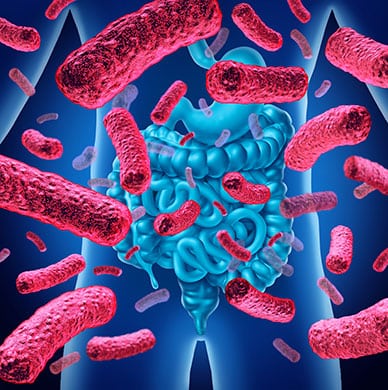As we age, our risk for a number of health complications increases. Neurodegenerative conditions like Alzheimer’s, potentially terminal illnesses such as cancer and heart disease and metabolic disorders such as fatty liver disease and diabetes are just a few of the health hurdles that many seniors will have to face. Scientists have long struggled with understanding the mechanisms underlying aging and its related issues. New research that suggests wrinkles in cells cause aging sheds light on this murky area and may lead to therapies that could turn off the effects of aging and combat age-related conditions.
Scientists Discover Wrinkles in Cells Cause Aging
“You can’t help getting older, but you don’t have to get old,” may have been uttered by a famed comedian, but it’s a notion that’s no laughing matter to scientists who are working to put the brakes on the aging process.
A new discovery suggests that the negative aspects of aging may be the result of “wrinkles” within cellular nuclei that prevent genes from properly functioning. The researchers believe there may be a way to smooth out those wrinkles that could stop or even reverse the aging process, leaving scientists to ponder on the possibility of a wrinkle cream for our DNA. The results of the study have been published in the journal Aging Cell.
Lumpy Membranes: How Wrinkles In Cells Cause Aging and Illness
In the new study, a team of researchers from the University of Virginia School of Medicine were investigating fatty liver disease, which is a condition that occurs when fat builds up within the liver. It’s normal to have some amount of fat in the liver, but too much impairs liver function. Fat accumulation in the liver can have serious health consequences. Along with an increased risk of Type 2 diabetes and heart disease, too much fat in the liver can lead to liver failure and potentially even death.
Fatty liver disease affects an estimated 100 million people in the United States alone. Typically associated with an older population, the majority of cases are diagnosed in people who are between the ages of 40 and 60. Fatty liver disease is the most common cause of liver disease in Western populations, however, the exact cause and underlying mechanisms remain unclear.
During her research, senior authors of the study, Professor Irina M. Bochkis, Ph.D., discovered that the creation of liver fat occurs due to the development of wrinkles in the cell’s nucleus. The nucleus of a cell is where our DNA is stored. The team’s research demonstrates that where DNA is actually located within a cell’s nucleus is “critically important.”
These cellular wrinkles begin to develop and increase in their numbers as we age. Their presence interferes with the cell’s ability to produce DNA. Dr. Bochkis explained, “we have the same DNA in every single cell but each cell is different.” She further expounded, “so how does that work? Well, actually, certain genes need to be on in the liver and they have to be turned off in the brain, for example, and vice versa. If they’re not turned off appropriately, then you have problems.”
Under normal circumstances, when they are turned off, these genes are pushed against a membrane that surrounds the nucleus. As we get older, this membrane develops irregular lumps and wrinkles that stop genes from turning on or off as they should. According to Bochkis, “when your nuclear membrane is no longer functioning properly, it can release the DNA that’s supposed to be turned off.” She explained that in the case of fatty liver disease, this essentially results in turning liver cells into fat cells. “The liver can end up looking like Swiss cheese,” she said.
Reversing the Aging Process by Smoothing Cellular Wrinkles
So, if wrinkles in cells cause aging, what exactly causes these membrane irregularities, and is there any way to prevent and repair the damage? Similar to how a lack of the substance collagen produces wrinkles in the skin, wrinkles in the nuclear envelope stem from a lack of a particular substance. In this case, that substance is the protein lamin. Lamins are a group of cellular proteins that provide structural integrity to the membrane. The team believes that adding this protein back into the nuclear membrane will reduce the membrane wrinkles and reverse the fat cells back into healthy liver cells. The problem then becomes how to reintroduce lamins back into the cells. Bochkis and her team believe that a modified virus could be the most viable method of transporting the microscopic protein payload into place.
Modified viruses are already being used as a means of delivering other types of treatment. Dr. Bochkis believes that because of the role that the liver plays in detoxification, it would be particularly easy to do for their purposes. According to Dr. Bochkis, if this approach is successful, “you’re going to have normal cells, normal healthy cells, and they will appropriately express the genes that should be expressed… you’re going to eradicate the stuff that shouldn’t be there.”
Dr. Bochkis believes that wrinkling in the nuclear envelope is largely responsible for most age-related diseases and illnesses in other parts of the body as well. “Every time I give this talk to colleagues, they say, ‘well, do you think this is a universal mechanism?’ In my opinion, I think it is,” she said.
 Müller and his colleagues felt that this was a deserving point of focus. According to fellow team member and ECRC researcher Dr. Nicola Wilck, “gut bacteria influence the host organism, and the immune system is also very active in the gut.” The team decided to investigate the effect that salt has on the bacterial populations of the gut to determine what changes occur and discern if those changes may be linked to the detrimental effects of a salt-laden diet. The team’s
Müller and his colleagues felt that this was a deserving point of focus. According to fellow team member and ECRC researcher Dr. Nicola Wilck, “gut bacteria influence the host organism, and the immune system is also very active in the gut.” The team decided to investigate the effect that salt has on the bacterial populations of the gut to determine what changes occur and discern if those changes may be linked to the detrimental effects of a salt-laden diet. The team’s  In another separate study that looked at
In another separate study that looked at  The team discovered that a week after the last treatment, the inoculated rats possessed significantly higher levels of a particular anti-inflammatory protein referred to as interleukin-4 in the hippocampal region of the brain. The hippocampus plays a key role in learning and memory. An integral part of the limbic system, one of the roles of the hippocampus is the regulation of anxiety and fear responses.
The team discovered that a week after the last treatment, the inoculated rats possessed significantly higher levels of a particular anti-inflammatory protein referred to as interleukin-4 in the hippocampal region of the brain. The hippocampus plays a key role in learning and memory. An integral part of the limbic system, one of the roles of the hippocampus is the regulation of anxiety and fear responses. The team investigated the immune cells in the liver to understand the underlying mechanisms behind the tumor suppression. In their research, the team demonstrated that a particular species of bacteria,
The team investigated the immune cells in the liver to understand the underlying mechanisms behind the tumor suppression. In their research, the team demonstrated that a particular species of bacteria,  Flavonoids have many protective properties. Two of the main characteristics of flavonoids that benefit our overall health are their anti-inflammatory and anti-oxidizing properties.
Flavonoids have many protective properties. Two of the main characteristics of flavonoids that benefit our overall health are their anti-inflammatory and anti-oxidizing properties.